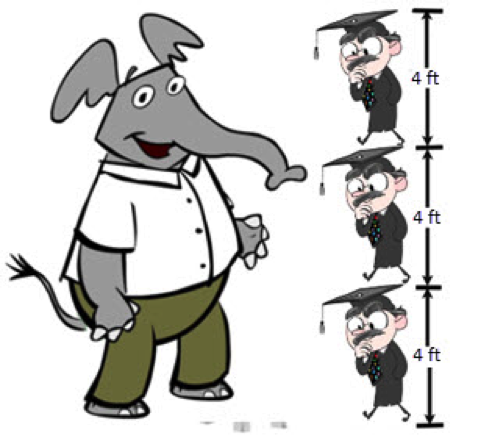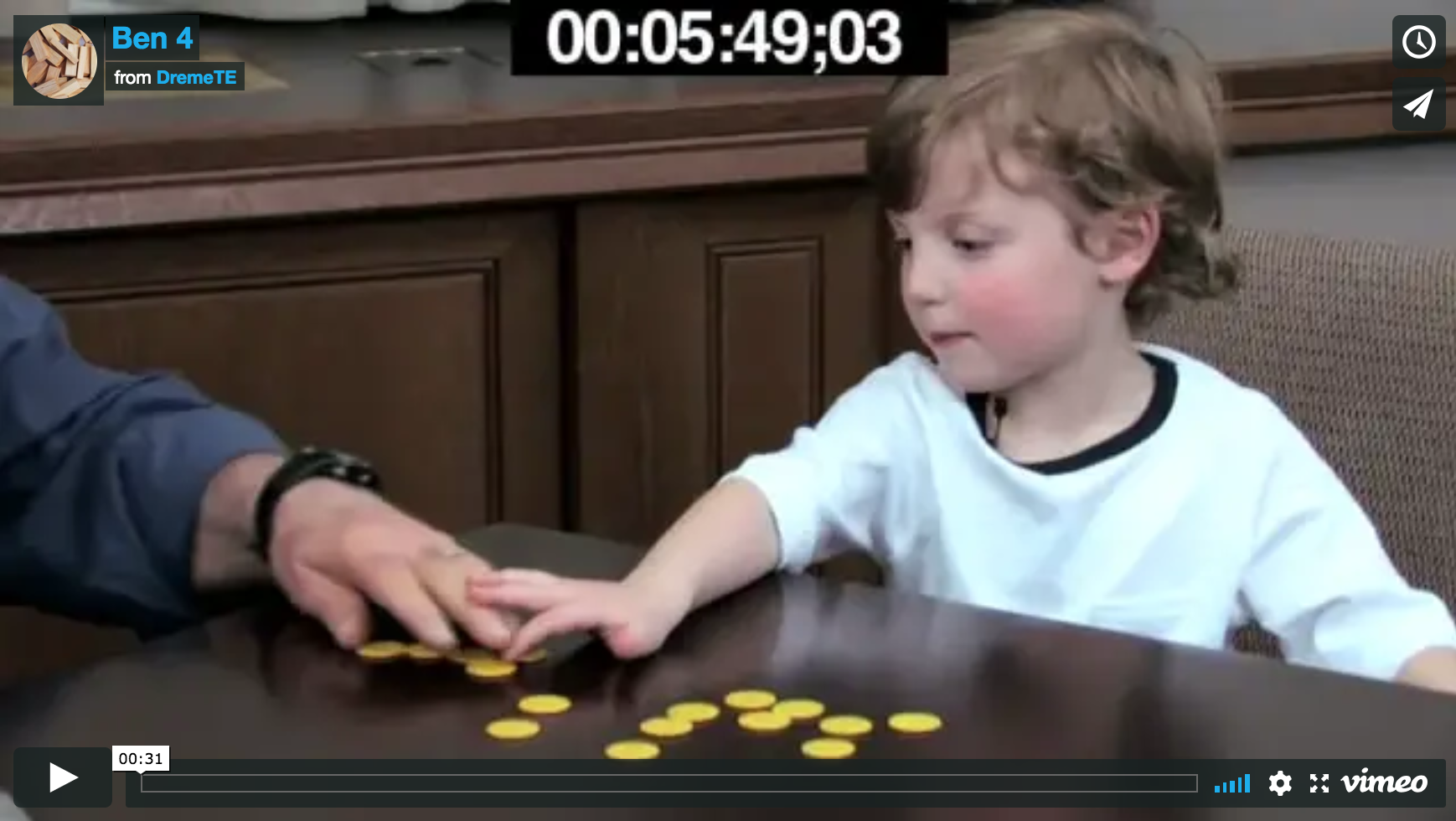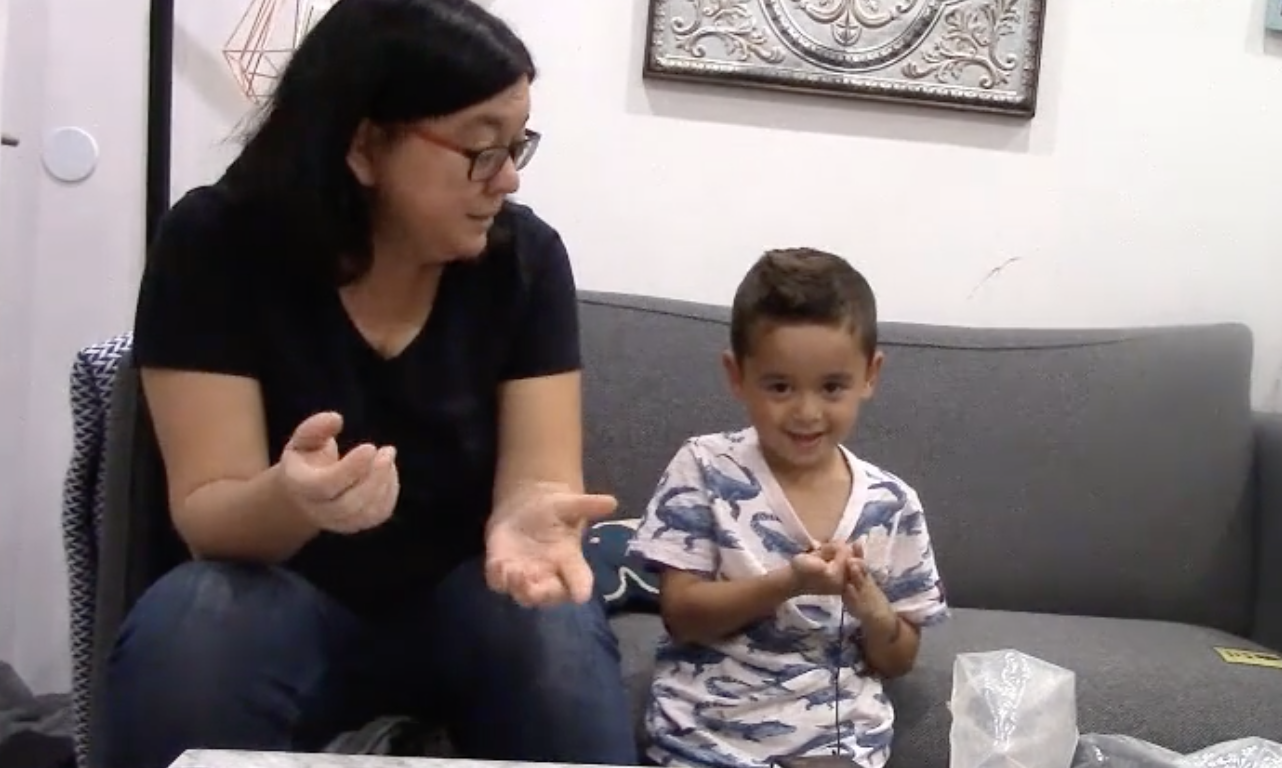You’ve been counting regularly in your classroom and you’ve decided to start including activities that encourage children to delve into the exciting world of measurement. But what is the difference between these two areas of mathematics? This handout discusses some important differences between counting and measuring, and how to talk about measurements that aren’t exact.
You’ve been counting regularly in your classroom and you’ve decided to start including activities that encourage children to delve into the exciting world of measurement. But you are finding that measurement is a little tricky.
Young children spend much of their time counting, both at home and in the classroom. They count toy train cars on a track, drumbeats in a song, movements in a dance, sides on a pentagon, red and blue beads on a necklace, and children in their classroom. They’ve become quite good at counting what we call discontinuous quantities: sets of separate things (train cars, drumbeats, arm motions, sides, blue beads, children), frequently using one-to-one correspondence as they touch each train car or move each bead along the string.
 Now, instead of counting how many children are in the classroom, you are asking children how tall their classmate is. You’ve entered the world of continuous quantities. This is a world where we aren’t counting separate things, but rather attributes or properties of things, such as length, height, weight, volume, mass, distance, temperature, and time. One defining (and sometimes troublesome) characteristic of continuous quantities is that they can be infinitely divided into smaller parts or fractions (eighths, tenths, etc.) whereas discrete discontinuous quantities cannot. The number of children in a classroom is a discontinuous quantity. The height of each individual child is a continuous quantity.
Now, instead of counting how many children are in the classroom, you are asking children how tall their classmate is. You’ve entered the world of continuous quantities. This is a world where we aren’t counting separate things, but rather attributes or properties of things, such as length, height, weight, volume, mass, distance, temperature, and time. One defining (and sometimes troublesome) characteristic of continuous quantities is that they can be infinitely divided into smaller parts or fractions (eighths, tenths, etc.) whereas discrete discontinuous quantities cannot. The number of children in a classroom is a discontinuous quantity. The height of each individual child is a continuous quantity.
Non-standard measurement refers to the repeated use of a single object or multiple duplicates of same-sized concrete units end to end to measure attributes like length, height, or area. In the preschool classroom we usually make use of common regularly-shaped objects like blocks. But rarely is anything exactly a perfect multiple of a non-standard unit. Those fun activities where we measure a child’s height with a cut-out of their foot almost never result in an exact number of feet. What do we do with this extra amount of a block or extra amount of a cut-out foot? How do we talk about this with children? This is beginning to make counting objects sound simple in comparison!
For certain we’d have better luck if we used a standard measurement tool like a yardstick, Right? Ah, but objects are rarely exactly x inches. And, to make things more difficult, the length might be between the 29 13/16 mark and the 29 14/16 mark on the yardstick!
So, what do we do? As we’ve written in documents in other modules, we suggest that you break out the honesty, “Hmmm… it looks like the math table is 15 blocks long plus part of a block. So it is more than 15 blocks, but less than 16 blocks.” Or, “It looks like it is almost 30 inches long.” See how easy that was! Honestly!



